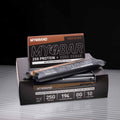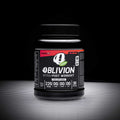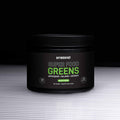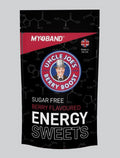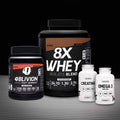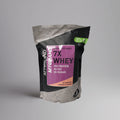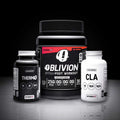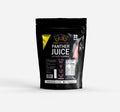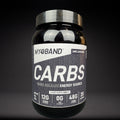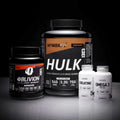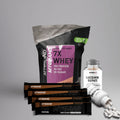Why and how to use protein shakes when dieting.
Posted by LIAM KINGSWELL

AUTHOR: Gareth Sapstead: MYOBAND Fitness Director
When it comes to losing weight then it's as simple as calories in versus calories out (CICO). Essentially, if you want to lose weight then you need to “do more and eat less”. Scientifically this is covered in the first two laws of thermodynamics.
Real-world evidence for this can be seen in those who’ve lost weight following a calorie-restricted diet of Oreo Thins, Jaffa cakes and Pepsi light! It’s not smart, but eating what you’d like while tracking just your calorie intake is a guaranteed way to lose weight.
However, when it comes to dropping body fat and not just body weight while maintaining or gaining muscle — as is the goal of most of us in this space — then it gets a little more complicated. This is where a calorie is not simply just a calorie, CICO isn’t the be all end all, and your food quality and macronutrient intake plays a vital role.
Protein and dieting
Net protein balance is the difference between muscle protein synthesis and muscle protein breakdown. In order to gain muscle and promote recovery then protein balance must be positive. In other words then protein synthesis (the formation of new muscle proteins) must be higher than protein breakdown.
Using protein shakes and supplying your body with amino acids during the day and around key times (before, during and after training) plays an important role in maintaining a more favorable protein balance. Protein and protein shakes work in a two-pronged manner by:
- Increasing muscle protein synthesis and,
- Decreasing protein breakdown.
A higher net protein balance is achieved with versus without using protein powders at key times. As a result this helps to promote gains in muscle and strength even while eating in a calorie deficit.
Protein and muscle sparring
When you’re dieting and in a calorie deficit then your protein turnover is higher and your body is likely to be in a catabolic state — Muscle protein breakdown is higher. You therefore risk losing lean muscle tissue if you don't focus on doing the right things. Because protein turnover is greater, then protein intake should increase in order to be able to deal with the constant challenge to synthesize new proteins.
To assist with fat loss while having a muscle ”sparring” effect then protein intake should increase. Protein shakes are a great way to do this because they’re high protein with very few calories, carbohydrates or fats.
A single 30g serving of 8X whey protein is around 117 calories and provides around 25g protein. Sure, by skipping your protein shakes when dieting you’ll eliminate 117 calories for every serving missed, but, you’ll also pose the risk of:
- Having an overall lower dietary protein intake.
- Reducing amino acid availability at times where your body is breaking down more proteins.
- Not getting the anabolic effect of using protein shakes around workout times.
- Affecting your speed of recovery, meaning you’ll not be able to train as hard, meaning less calories burned each workout.
- Not having the psychological effect of having something post-workout, potentially meaning you'll grab and gorge on something else later in the day.
- For some, the sweetness of a protein shake can also curb diet cravings. Something you're unlikely to get from any other foods as low in calories and high in protein.
Other benefits of protein
Protein has a higher thermic effect of feeding (TEF) than carbs or fats, meaning you burn more calories than carbohydrates and fats when digesting protein. TEF only has a minor contribution to your overall energy expenditure, however every little helps when it comes to reaching your fat loss goals sooner.
Protein also keeps you feeling fuller for longer, with research indicating 30g or more being needed in one sitting to have an effect on satiety. A high-quality protein shake has around 25g of protein per serving, meaning it wouldn’t take much extra to reach that magic 30g of hunger-satisfying protein. You'd have to eat around 5 boiled eggs to hit 30g of protein, but you'd also be consuming nearly three times the calories in the process.
High-quality protein powders are low in both fats and carbohydrates. So whether you’re choosing to use a low carbohydrate, low fat, or mixed approach, then healthy fats or carbohydrates can be added to your diet via other means. For example, blending your protein shakes with nut butters would make for a good snack or meal replacement if you’re dieting on low carbohydrates. Alternatively, blending your protein shake with oats or a banana would suit you if you’re using a low fat approach. As a general rule of thumb then low-carb diets should be higher in fat, whereas lower fat diets should be higher in carbohydrates. This stops your body from turning to protein and amino acids to use as an energy source, and keeps other bodily processes ticking over. Protein shakes can easily be tailored around any fat loss diet plan.
Recommendations
- Use a fast acting form of protein around your workouts such as whey, or hydrolysed proteins. Exactly the same as if you weren’t dieting.
- If using protein shakes as meal replacements then a mix of fast acting and timed release proteins will work best. For example, whey protein mixed with pea protein, milk protein or casein work well. Hydrolyzed casein as in Oblivion also has the unique benefit of rapidly supplying then maintaining your body’s supply of amino acids for a long period of time.
- When using protein shakes for meal replacements then try combining them with other foods to increase the nutrient density (for example berries, spinach, kale etc.), or even a greens superfood supplement.
- Try using nut butters, coconut oil, or even fresh avocado in your protein shakes to add healthy sources of fat in to your diet if using a low carbohydrate approach to dieting.
- When using a low fat approach to your diet then try experimenting with different fruits, or adding fine oats to your protein shakes.
TAGS:



